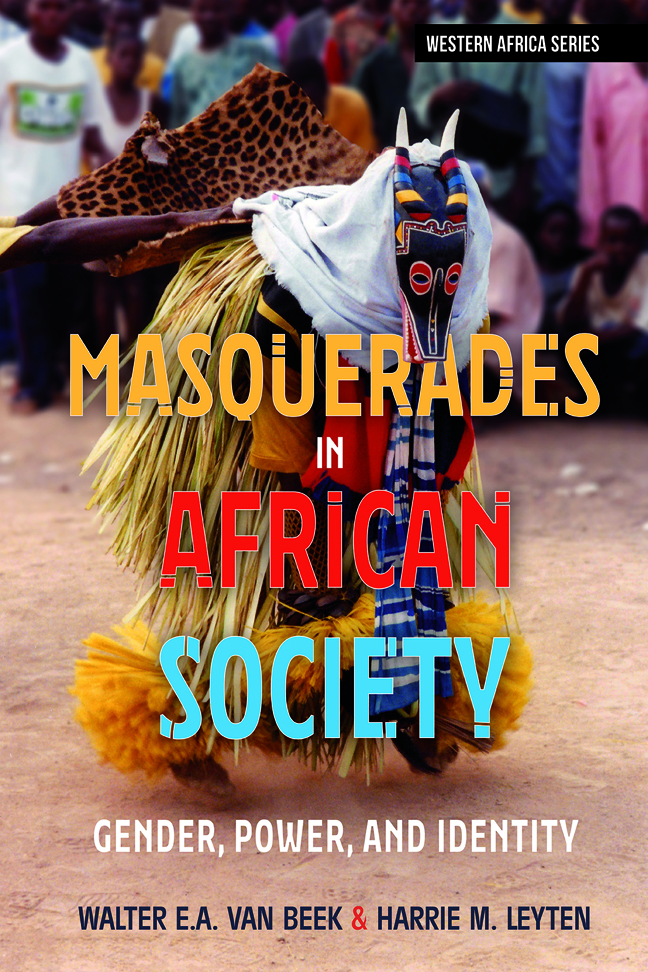Book contents
- Frontmatter
- Dedication
- Contents
- List of Illustrations
- Acknowledgements
- Introduction
- The Mask Crescent: Distribution of Masks and Masking in Africa
- 1 Mask Distribution and Theory
- 2 What is a Mask?
- 3 Masks and Masculinity: Initiation
- 4 Secrecy and Power
- 5 Death and its Masks
- 6 Women: Pivot of the Masks
- 7 Masks and Politics
- 8 Masks and the Order of Things
- 9 Masks and Modernity
- 10 Memories of Power, Power of Memories
- 11 Conclusion
- Bibliography
- Sources for Ethnographic Cases
- Picture Credits
- Index
11 - Conclusion
Published online by Cambridge University Press: 22 February 2024
- Frontmatter
- Dedication
- Contents
- List of Illustrations
- Acknowledgements
- Introduction
- The Mask Crescent: Distribution of Masks and Masking in Africa
- 1 Mask Distribution and Theory
- 2 What is a Mask?
- 3 Masks and Masculinity: Initiation
- 4 Secrecy and Power
- 5 Death and its Masks
- 6 Women: Pivot of the Masks
- 7 Masks and Politics
- 8 Masks and the Order of Things
- 9 Masks and Modernity
- 10 Memories of Power, Power of Memories
- 11 Conclusion
- Bibliography
- Sources for Ethnographic Cases
- Picture Credits
- Index
Summary
The cultural niche for masquerades
A long book needs a short conclusion. Reviewing the dynamics of the masquerades in the various fields and overviewing the concluding sections in each chapter, we come back to the first part of our theory test: what is the socio-cultural niche for masking?
The answer resides in a network of related factors. The population density should be above a certain threshold, because the cultures housing mask rituals must have a socio-ecological basis with a certain permanence, not continuously moving, and of sufficient complexity. People have a definite pronatal attitude, children are welcome. In the horticultural system, root crops have an important place, and women shoulder a large responsibility for food production, a crucial role in subsistence that offers them a strong social position relative to men. This position is reinforced through lasting bonds with their kinsmen, while society also tends to matrilineal kinship reckoning and has a high local endogamy; bride wealth is relatively low. In these societies men do not form strong corporate groups, have little inheritable wealth, and must negotiate for their socio-political positions. Kinship lines are shallow and tend to be limited to the village. Cattle are absent – at least the cattle complex is not there – and the same holds largely for camels and horses.
Thus, the position of the men is to a high degree defined by what they do not have – wealth, power, and authority over women – while the women's position is painted in what they do have – fertility, production, and family. The male power base is one of indeterminacy, open to constant debate and negotiation, while the female power base is solidly inside the domestic unit, plus in her body. In the economy labour forms the main capital, one reason for the desire for children, which fits in with the horticultural food production. That, in short, is the common element inside the Mask Crescent, and when overviewing profiles the societies housing masquerades are shown to comply with this profile, even with the leeway that can be expected from a probabilistic theory. So we can conclude that this gender-cum-power factor is the first step in the explanation for the highly peculiar distribution of masquerades on the continent.
The second phase of explanation concerns how masquerades address these two basic arenas.
- Type
- Chapter
- Information
- Masquerades in African SocietyGender, Power and Identity, pp. 333 - 348Publisher: Boydell & BrewerPrint publication year: 2023

